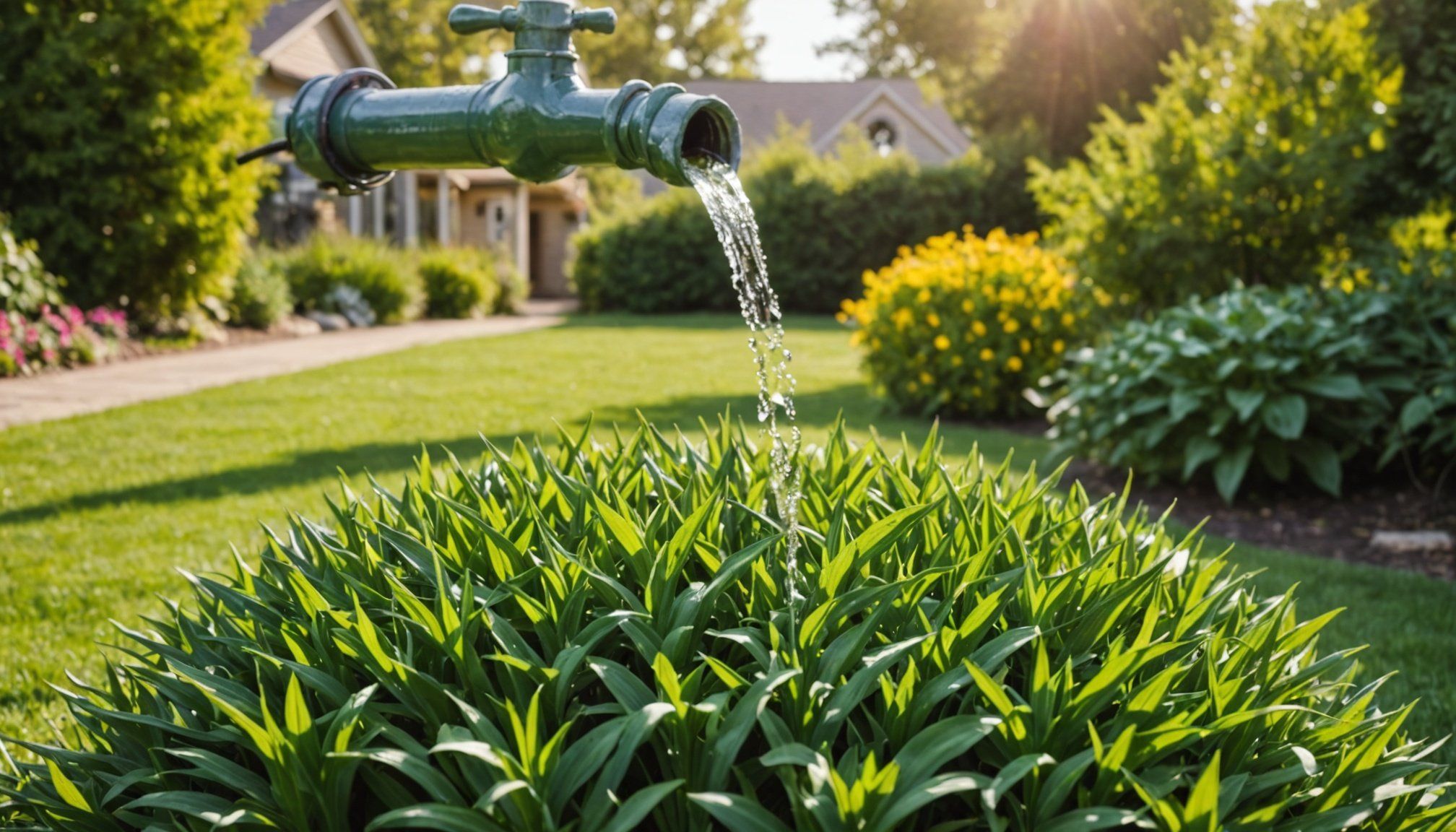As droughts become frequent companions to our modern weather patterns, the need for sustainable water management in gardens becomes paramount. How can we ensure that our beloved green spaces stay vibrant and healthy while minimizing water use? This challenge calls for a strategic approach to watering, an understanding of soil and plant needs, and the implementation of smart irrigation systems.
In this article, we unravel the secrets to maintaining a thriving garden amidst drought conditions, offering practical advice and insights to make every drop of water count.
Also to see : How can I design a garden that thrives in shade?
Embrace Smart Watering Techniques
Smart watering is not just about when, but also about how you water your garden. The method you choose can significantly influence both your water usage and your plants’ health.
Timing is Everything
When it comes to irrigation, timing holds the key. Watering your garden in the early morning or late evening, when temperatures are cooler, reduces evaporation. This ensures that more moisture reaches the roots instead of evaporating under the mid-day sun.
Topic to read : What types of herbs can grow well in containers on my patio?
Drip Systems: A Game Changer
Consider installing a drip irrigation system. Unlike traditional sprinklers, a drip system delivers water directly to the plant’s roots, minimizing waste and maximizing efficiency. This method is particularly beneficial for garden beds and shrubs, where targeted watering can make all the difference.
Invest in Moisture Sensors
Moisture sensors can be a gardener’s best friend. These devices measure the soil’s water content, allowing you to water only when necessary. By preventing unnecessary watering, you conserve water and prevent over-saturation, which can harm plant roots.
Prioritize Your Plants
During a drought, it’s crucial to prioritize which plants receive water. Focus on new trees, shrubs, and perennials that are less drought-tolerant. Established plants can often survive periods of drought with minimal watering.
Improve Soil Health for Better Water Retention
The health of your soil plays a fundamental role in water management. Healthy soil retains moisture better and requires less frequent watering.
The Power of Mulch
Applying a layer of mulch around your plants is a simple yet effective way to conserve water. Mulch reduces evaporation, moderates soil temperature, and adds organic matter as it breaks down. Materials like straw, wood chips, or shredded leaves work best, creating a barrier that retains moisture and suppresses weeds.
Organic Matter Matters
Enhancing your soil with organic matter improves its ability to hold water. Compost, aged manure, and leaf mold enrich the soil structure, increasing its moisture retention capacity. This not only reduces the need for frequent watering but also promotes healthy root development.
Aerate Your Lawn
Compacted soil can hinder water absorption. Aerating your lawn improves soil structure, allowing water to penetrate more efficiently. This simple process involves perforating the soil with small holes to allow air, nutrients, and water to reach the roots.
Choose Drought-Resistant Plants
Opt for plants that thrive in dry conditions. Native plants, succulents, and other drought-resistant species can significantly reduce your garden’s water needs. These plants have adapted to survive in less-than-ideal conditions, making them perfect allies during a drought.
Adopt Efficient Irrigation Practices
Implementing efficient irrigation practices can dramatically reduce water waste. By optimizing your watering techniques, you can ensure that your garden receives the necessary moisture without excess usage.
Calibration of Systems
Properly calibrate your irrigation system to match the specific needs of your garden. This involves adjusting the water pressure, ensuring even coverage, and checking for leaks or misaligned sprinklers. Regular maintenance keeps your system functioning optimally, minimizing waste.
Utilize a Hose Wisely
A simple hose can be a versatile tool in your gardening arsenal when used judiciously. By hand-watering, you can direct water precisely where it is needed, avoiding overspray and runoff. Consider using a watering wand attachment to reach the base of plants efficiently.
Create Zones
Segment your garden into different watering zones based on plant types and moisture needs. This approach allows you to tailor your irrigation practices, ensuring each zone receives appropriate care without excessive watering.
Rainwater Harvesting
Maximize natural resources by incorporating rainwater harvesting into your garden strategy. Collecting rainwater in barrels during wet periods provides an additional water source during dry spells. This sustainable practice not only conserves water but also adds a natural touch to your watering routine.
Protect and Preserve Your Garden
Ensuring your garden thrives during a drought involves protective measures that conserve water and keep plants healthy.
Shield Your Soil
Creating a protective soil environment through ground cover can greatly reduce water loss. Ground covers, like clover or creeping thyme, prevent evaporation and enrich the soil with organic matter as they grow.
Maintain a Healthy Lawn
Contrary to popular belief, a well-maintained lawn can survive a drought with minimal water. Mow your lawn higher, leaving grass blades longer to shade the soil and preserve moisture. Avoid cutting more than one-third of the grass height at a time to prevent stress.
Care for Trees and Shrubs
Established trees and shrubs are more resilient to drought, but they still need care. Deep watering encourages robust root systems that seek out moisture deeper in the soil. Consider wrapping the base of trees with tree rings to retain moisture.
Encourage Native Wildlife
Invite native wildlife to your garden to create a balanced ecosystem. Birds, beneficial insects, and pollinators contribute to the health and vitality of your garden, promoting resilience during challenging conditions.
Managing water usage in your garden during a drought doesn’t mean compromising on beauty or health. With thoughtful planning, strategic watering, and effective soil management, you can maintain a lush garden while conserving precious resources.
Embrace these practices to ensure your garden remains a thriving sanctuary, even in times of water scarcity. By prioritizing smart watering, soil health, and efficient irrigation, you not only protect your green space but also contribute positively to the environment. Make every drop count and enjoy the rewarding experience of a well-cared-for garden.











